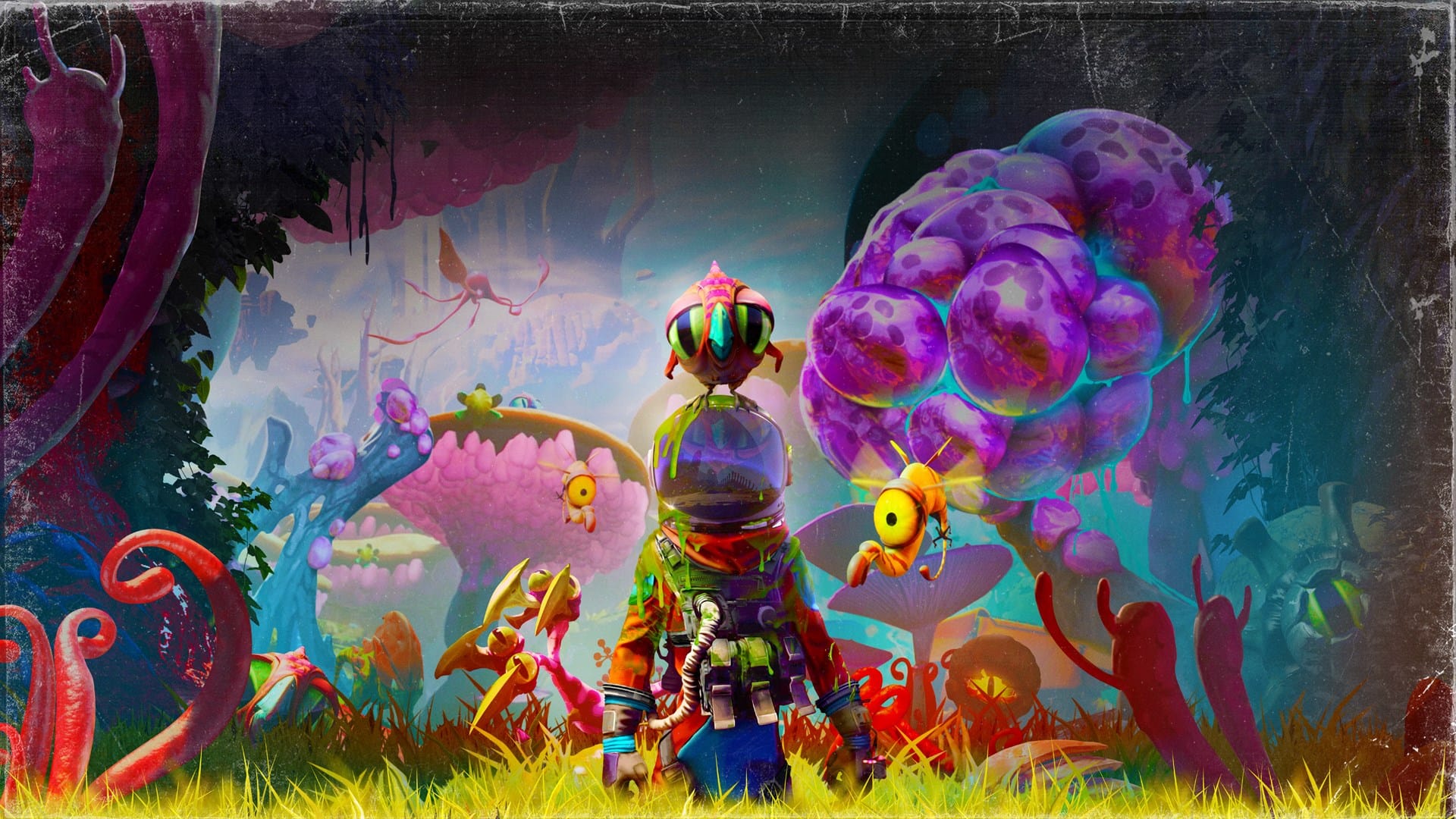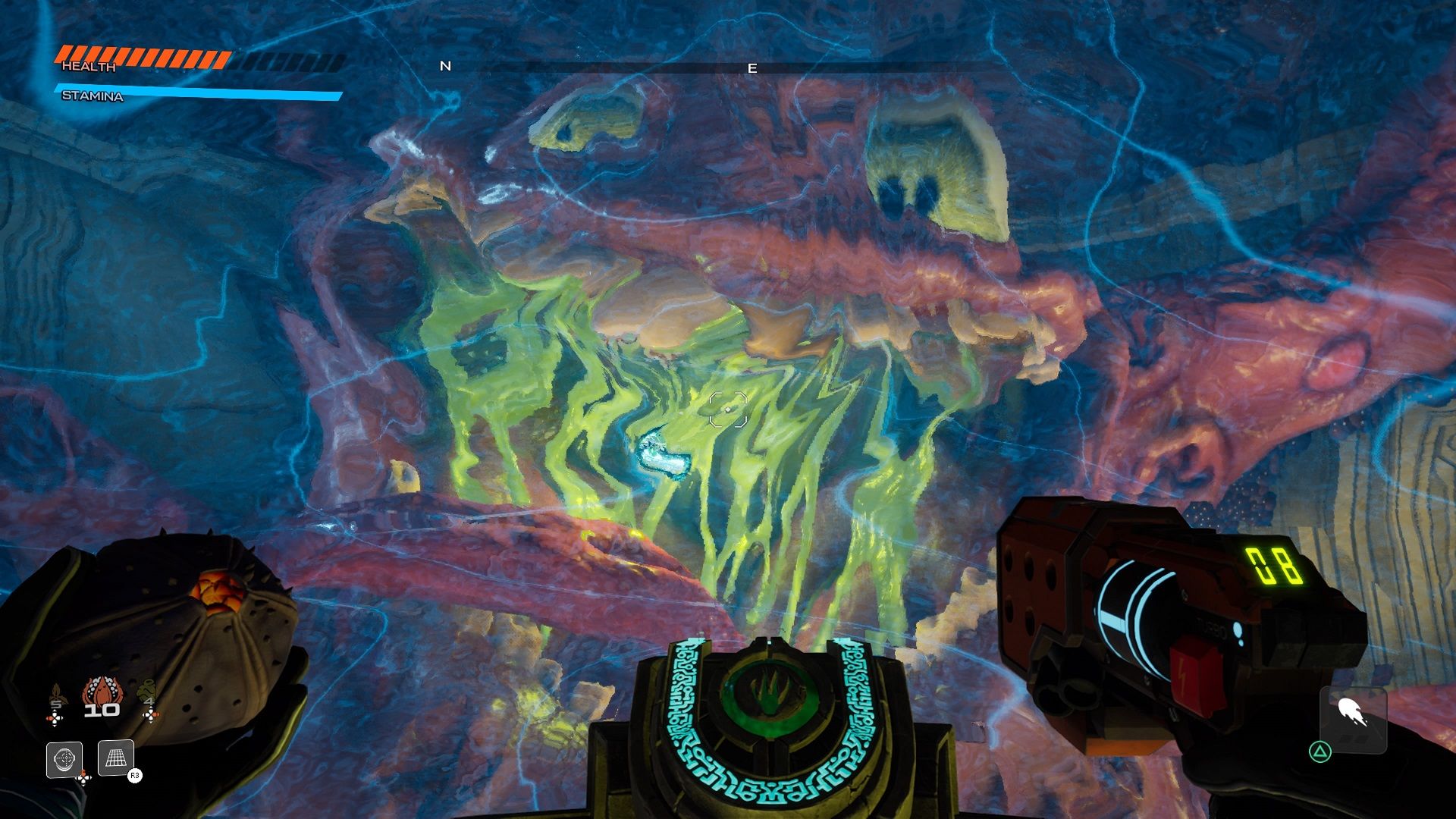Journey to the Savage Planet and Item-Based Progression Systems
Getting the tools is half the battle

Journey to the Savage Planet is a silly game. After you awake in your spaceship, you watch a hilarious FMV that gives you exposition about the game and then learn all of your basic functions while a narrator makes jokes about the corporate workplace. The writing does an excellent job of setting the light-hearted mood of this game. In games like this, the writing usually takes center stage, which made me look forward to scanning every object and discovering every new major location as I knew that it would be accompanied by an often hilarious quip from my ship's computer.
The game's eventual main objective is to find a way into a mysterious tower and discover what you can about the civilization that left it behind. Along the way you are given plenty of areas to explore and are told to catalog as much of the local flora and fauna as you can. To achieve both of these goals you require the aid of a 3D printer that will give you the tools required to overcome the challenges you face on the planet.
Most of the game is structured in a similar fashion to a Metroid Prime title: face an obstacle, explore and acquire tools, and use tools to overcome obstacles. This tried and true formula has been the driving force in many popular adventure games such as Metroid, The Legend Of Zelda, Ratchet & Clank, God of War, and other classics. Journey to the Savage Planet implements this design into its progression system so that the objects and tools you use are what gain the skills and upgrades instead of the character itself. This is what separates a tech tree from a true skill tree, and creates an item-based progression system.
The way I see it, there are two types of skills available to players when making their way through any type of video game “tree”. The first type (let's call it Type 1) is the acquisition of a brand-new function. This type includes all skills that offer the player new ways to interact with the game world or game system. These are typically the skills you look forward to as they offer exciting new ways to play the game.
The second type of skill (Type 2) is the modification of an existing skill. This type takes anything that you can already do and makes them better, or worse, or better and worse at the same time. These are not as exciting to unlock, however, they lead to a feeling of increased overall strength and can be really fun when the fun of a game is deciding how to build a character.
A good example of this concept lies in Diablo 3. There are two rows of each skill in the game: there is the top row that has only new Type 1 skills, and when you click into one of these skills another row is presented with Type 2 skills related to the corresponding Type 1. Diablo 3 skills, both Type 1 and 2, are all drastically unique and fully interchangeable making for a lot of fun experimenting. Whenever I play the game and level up, I always want to pause and manage my skills to see what types of new things I’ve unlocked. I attribute this excitement to the intuitive design of the skill tree as well as the creativity of each skill.
In contrast, let’s take an older system like the sphere grid in Final Fantasy X. The sphere grid has many Type 2 skills that are relatively dry such as just raising HP or another base stat. The Type 1 skills are few and far between, however, and as you make your way to each one you are given forks in the road to decide which skills you want to set goals for. Suddenly each Type 2 skill begins feeling like progression towards a cool new ability that you got to pick out.

Journey to the Savage Planet’s tech tree is almost exclusively Type 2 abilities with the exception of the Proton Tether. Based on my previous examples it might appear that Type 2 skills are generally boring, but that’s not always the case. In Diablo 3, the Type 2 skills include ways to change an ability that could give you an idea of how to make a build that destroys waves of enemies in seconds. In Final Fantasy X, the Type 2 spheres serve as a visual overview of your character's overall strength. In Journey to the Savage Planet, the Type 2 skills serve to deepen the player's interaction with the planet.
One of the cool things about using a tech tree rather than a skill tree is that usually, an upgrade on the tree will manifest into a physical object that the player can use out in the world. The Legend of Zelda franchise does not utilize skill or tech trees, but it does pace its games using tools that are required to solve certain environment-based puzzles.
The way that Journey to the Savage Planet implements its suit upgrades in practice is very similar to getting a new gadget in The Legend of Zelda. In both games, you are using tools that destroy the environment, cross gaps, and manipulate enemies. Of course, The Legend of Zelda has more in terms of content, but it’s a longer-running series that has had years to craft the best ways to stuff Link's backpack. I think that the dungeon structure of a Zelda game really allows each new tool to shine in ways that Journey to the Savage Planet is missing.
As far as open-world interaction goes, using an example like Zelda shows that I didn’t have a strong motivation to go out of my way to find cool things in hidden places in Savage Planet. This has to do with how much I enjoyed the combat in each title. Dueling enemies as Link has felt tense and fun for as long as I can remember while dodging and sharpshooting as the pioneer in Savage Planet feels imprecise and clumsy. I only wanted to collect these orange goo collectibles at certain points so that I could allow myself the necessary combat mistakes required to get through fights. The other rewards for exploring were mostly resources and the occasional artifact needed to upgrade your suit. These things pleased the collector side of my brain but failed to make me feel like I was any closer to any of my goals since combat is not the main objective of this game thematically.

On the contrary, in any Legend of Zelda game, your ultimate goal is to defeat Ganon. While you may be distracted by other activities, you are always left feeling like you’ve made a friend or received an item that will help you reach and defeat Ganon. It’s harder to give the same level of purpose in a game like Savage Planet that starts with “scan a bunch of wildlife” as a primary introductory objective. Journey to the Savage Planet’s Type 2 upgrade system fails to excite the player in their own progression by allowing them to do the same things only better so that they can continue to face the tower without knowing in what ways they want to be stronger.
Journey to the Savage Planet does a lot to dampen my excitement towards new upgrades, but the tech tree got me really hooked on the world and environment which were the real stars of the game from the start. Each 3D printer upgrade is Type 2 in support of the Type 1 skills that are embedded into the world itself. Finding a bomb bush in the wild and discovering what it does was just as fun as unlocking a new ability in any other game. It was just that the discovery of these world interactions is so natural that they feel like things that have always been a part of the world, not something that you earned. So while functionally the same, the player reaction is different only because the new ability was not presented as a reward for their efforts.
I like how this puts a spotlight on the theme presented at the beginning of the game, how you are here to “learn about the planet”. This style of progression has some quirky features, one of which is the heavy use of backtracking. Luckily if you are on top of your upgrades and explore the right places this becomes completely manageable. Early in the adventure I was dreading the thought of having to backtrack so much. But each locale was filled with distinctive, unique locations that were easily remembered even with the environment presented as one cohesive world.
The lack of obstacles made walking a bit of a snooze, but the time spent running back and forth helped me ruminate on the locations I'd seen and mentally tab the places that I still needed to explore. Even though this game is open-world in nature, it still resembled the bones of early 2000s platformers in that there were “trails” of sorts which led you naturally into its side areas without breaking from the main path. This while also having clearly defined roadblocks that never stumped me as to whether it was a place I was supposed to be at the time.

Journey to the Savage Planet uses its item-based system to progress you through the world, allowing you to interact with the planet in a symbiotic way, using natural resources to climb one more step up the mountain. While this Savage Planet may not take up the mantle of the greatest adventure game of all time, the progression system could be the bedrock of another adventure to which I would absolutely make the journey.
